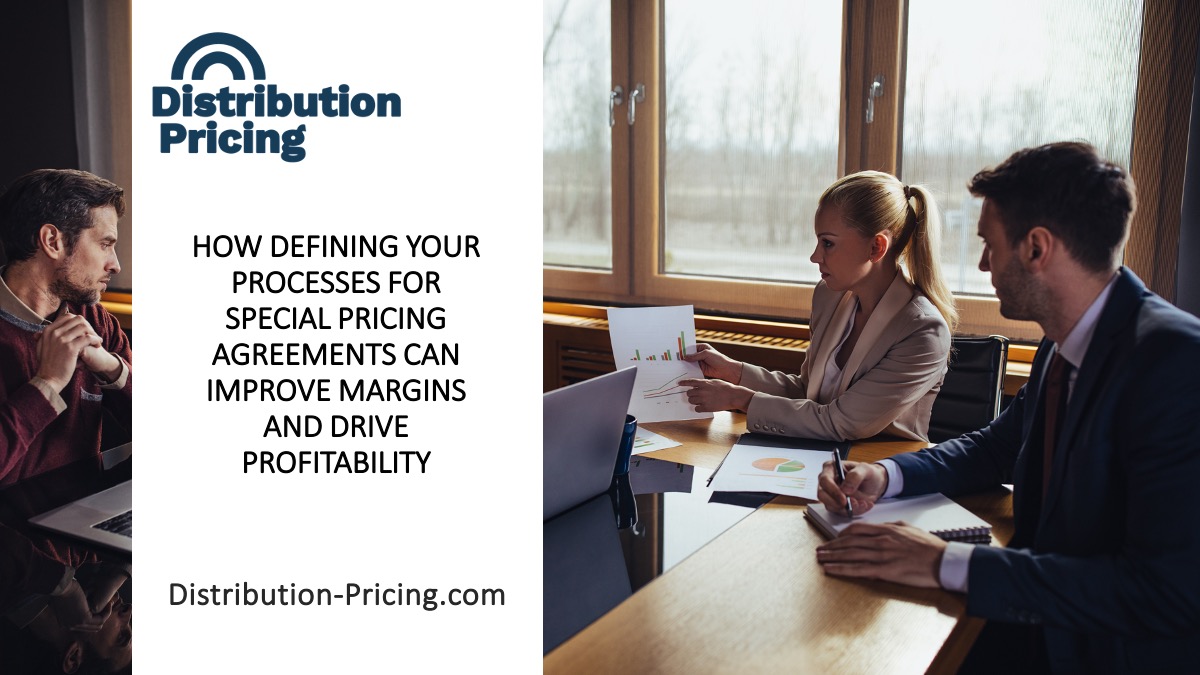Pricing is the battleground where wholesale distributors compete for profitability and market share. More distributors…

ERP Price: Where did it come from?
Have you ever wondered how your ERP system comes up with the price for an item? It’s a complicated process based on a complex set of rules established inside the distribution ERP system. But it is also one of the most important elements of distribution pricing.
Every ERP is different. So, every system comes up with their own ERP price matrix or rule sets. Every ERP price retrieval is based on these rules so they can vary from system to system (here is just one example from DDI). This post will outline the general concepts that most distribution ERP systems follow. It is important to consult the documentation for your specific ERP price setup for more details on how your system handles pricing.
1. Are the any special ERP price contracts?
Usually, the first place your system looks to deliver the ERP price to your sales rep is among the database of special contracts. A special pricing contract is given to a customer based on a unique set of circumstances and often in conjunction with vendor involvement. The most common reason to offer a pricing contract is to win a large or strategic customer.
A pricing contract locks in a pricing level or discount that is specific to a combination of a customer and a product or product line. Usually, the contract is set for a year and requires renewal at the end of each period. For example, you offer a particular customer a discount level on any item they purchase in a given product line until the end of the year. Assumably, this special pricing contract is a better deal than they would get from the regular price matrix. That is why this is the first place your system looks for pricing.
2. What does the ERP price matrix say?
For the lion share of your customers, you will set up a pricing matrix. The ERP price matrix calculates pricing based on a particular set of categories. At its most basic level, an ERP price matrix looks at what group your customer is in and what group the product they are purchasing is in. That intersection has a specific price or discount assigned. For example, you might have a category of customers that are frequent purchasers and regardless of the product they purchase they get an extra 4% off. Or you have a group of customers that was targeted from special pricing by a large vendor, so any customers that interest with that vendor’s product lines get a little bit better pricing than a walk-in customer.
Of course, your ERP price matrix can get a lot more complicated than those simple examples. It can include shipping, transportation options, purchase or replacement cost and more. Every distribution ERP price matrix handles these things a little bit differently, but the main idea is to give the customer the best possible price based on the type of customer they are and the product they are purchasing.
3. What is the ERP price by default?
Not every customer belongs to a specific customer group. Some are walk-in customers. Some just order online without logging into a specific account. These customers get a default ERP price, usually based on some sort of cost-plus analysis by your purchasing agent.
4. Do you allow sale reps to override the price?
Do you allow your sales reps and counter reps to override price anytime they want to? You probably shouldn’t do this because it is one of the biggest sources of lost profit and can be difficult to track down if you don’t have a pricing analytics system. But the override does just that, it overrides all the above logic and accepts whatever you allow your rep to enter the system.



